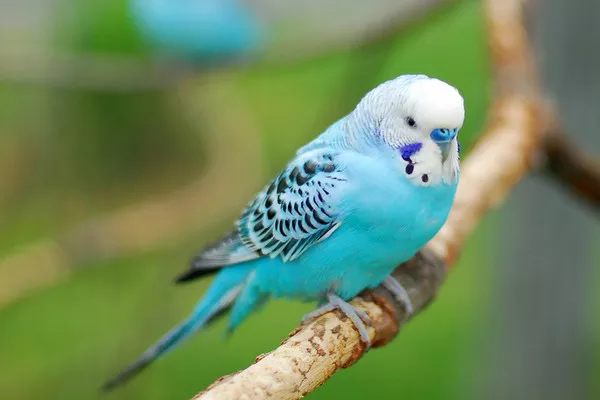Corn snakes (Pantherophis guttatus) are one of the most popular pet snakes in the world, known for their striking colors, gentle temperament, and relatively easy care requirements. However, many new snake owners may be surprised to learn about the unique biological processes that govern their health and behavior. One such process is brumation, a period of dormancy that many reptiles, including corn snakes, experience during colder months. This article explores when corn snakes brumate, the reasons behind this behavior, and how pet owners can manage it to ensure their pets remain healthy and happy.
Understanding Brumation
Brumation is similar to hibernation in mammals, but it is not entirely the same. It is a natural physiological response that reptiles exhibit in response to cooler temperatures and decreased daylight. While hibernation in mammals involves a prolonged period of deep sleep, brumation consists of a state of dormancy characterized by decreased metabolic activity, lowered body temperature, and reduced appetite. During this time, reptiles may become less active but do not enter a state of deep sleep. Instead, they may occasionally wake up and move around, although they will generally stay in a sheltered area.
Why Do Corn Snakes Brumate?
Brumation serves several essential functions for corn snakes and other reptiles.
Survival: In their natural habitats, corn snakes are exposed to seasonal temperature fluctuations. Brumation allows them to conserve energy and survive during harsh winter conditions when food sources are scarce.
Reproduction: The brumation period also plays a crucial role in the reproductive cycle of corn snakes. After emerging from brumation in the spring, corn snakes become more active and are ready to mate. The cold period helps synchronize breeding cycles and ensures that young snakes are born during warmer months when food is abundant.
Adaptation: Brumation is an evolutionary adaptation that helps corn snakes thrive in varying climates. It allows them to avoid extreme conditions that would be detrimental to their health.
When Do Corn Snakes Brumate?
The timing of brumation in corn snakes can vary based on several factors, including geographic location, temperature, and individual snake physiology. However, brumation typically occurs in late fall and winter, lasting from late October to early March. Here are the main factors influencing when corn snakes brumate:
Geographic Location
Corn snakes are native to the southeastern United States, where they experience a range of climates. In the northern parts of their range, temperatures can drop significantly during the winter months, prompting a longer brumation period. Conversely, corn snakes in southern regions may have a shorter brumation period due to milder winters.
Temperature
Temperature is a crucial factor in signaling the onset of brumation. As temperatures drop, corn snakes will instinctively begin to prepare for this dormancy. Typically, corn snakes will start to brumate when temperatures fall below 65°F (18°C). The ideal temperature range for brumation is between 50°F to 60°F (10°C to 15°C). If the temperature remains consistently warm, the snakes may not enter brumation at all.
Light Exposure
Day length, or photoperiod, also influences the brumation cycle. As the days shorten in the fall, corn snakes receive signals to prepare for dormancy. In captivity, owners can mimic these natural conditions by adjusting the light exposure in their snake’s habitat.
Individual Snake Factors
Each corn snake is unique, and individual factors can also play a role in determining the timing and duration of brumation. Age, health, and previous experiences can influence how and when a particular snake enters brumation. Younger snakes may not brumate as consistently as older, more mature snakes.
Signs That Your Corn Snake Is Preparing to Brumate
As the season changes and brumation approaches, corn snakes will exhibit several signs indicating they are preparing for dormancy. Recognizing these signs can help owners provide the proper care during this period.
Reduced Activity
One of the first signs that a corn snake is preparing to brumate is a noticeable decrease in activity. Snakes may spend more time hiding and less time exploring their enclosure. Owners may notice that their corn snake is less responsive to handling and feeding during this time.
Decreased Appetite
As brumation approaches, corn snakes will often lose interest in food. A typical behavior is to refuse meals, which can last several weeks or even months. It is essential for owners to understand that this is a natural behavior during the brumation period, and forcing a snake to eat can cause stress and health issues.
Seeking Shelter
During the weeks leading up to brumation, corn snakes may seek out hiding places in their enclosure. They might burrow into substrate or seek out dark, secluded areas. Providing suitable hiding spots can help your snake feel secure during this transition.
Behavioral Changes
Corn snakes may exhibit other behavioral changes as they prepare for brumation. These can include less frequent basking, decreased movement, and a more lethargic demeanor. Owners should monitor these changes and adjust their care accordingly.
How to Prepare Your Corn Snake for Brumation
If you are a corn snake owner, it is essential to prepare your pet for brumation to ensure a healthy and successful dormancy period. Here are some steps you can take:
Gradual Temperature Reduction
As the brumation period approaches, gradually reduce the temperature in your snake’s enclosure. Start lowering the basking and ambient temperatures by a few degrees each week until they reach the ideal brumation range of 50°F to 60°F (10°C to 15°C). This gradual adjustment helps mimic natural seasonal changes.
Adjust Lighting
As daylight hours decrease in the fall, consider adjusting the lighting in your snake’s enclosure to replicate these conditions. Reducing the duration of artificial light exposure to about 8 to 10 hours a day can help signal to your snake that it is time to brumate.
Monitor Feeding
Begin to reduce the frequency of feedings as your snake shows signs of decreased appetite. If your snake refuses food for more than a week or two, it is likely preparing for brumation. It is crucial to avoid feeding your corn snake if it is not actively hunting, as this can lead to health complications.
Provide Hiding Spots
Ensure your snake has plenty of hiding spots in its enclosure. This will help your corn snake feel secure as it transitions into brumation. Substrates like aspen shavings or coconut coir can provide excellent burrowing opportunities.
Maintain Cleanliness
Keep the enclosure clean during the preparation phase. Remove any uneaten food items, and ensure that water is fresh. A clean environment helps reduce the risk of bacteria and disease during brumation.
Managing Your Corn Snake During Brumation
Once your corn snake enters brumation, it is essential to continue monitoring its health and well-being. Here are some tips for managing your snake during this period:
Minimal Handling
During brumation, it is best to minimize handling your corn snake. While some snakes may wake up occasionally, they are generally less tolerant of disturbances during this time. Avoid handling unless necessary, and only do so if your snake appears to be awake and active.
Temperature Maintenance
Monitor the temperature of your snake’s enclosure throughout the brumation period. It is crucial to maintain a stable environment, ensuring the temperature does not drop below the recommended range. Fluctuations in temperature can stress your snake and disrupt the brumation process.
Provide Fresh Water
Even though corn snakes may not be active during brumation, they still need access to fresh water. Check the water bowl regularly to ensure it is clean and filled. Some snakes may drink during brumation, while others may not, but it is essential to provide the option.
Observing Health
Keep a close eye on your snake’s health throughout the brumation period. Look for any signs of distress, such as abnormal shedding, discoloration, or lethargy. If you notice any concerning signs, consult a veterinarian with experience in reptiles.
How Long Do Corn Snakes Brumate?
The duration of brumation can vary significantly between individual snakes and environmental conditions. On average, corn snakes may brumate for anywhere from a few weeks to several months, typically between two to four months. Factors influencing the length of brumation include:
Environmental Conditions: Cooler temperatures and shorter day lengths can prolong brumation. Conversely, warmer conditions may shorten the period.
Individual Factors: Some corn snakes may naturally have longer or shorter brumation periods due to their age, health, and genetic background.
Feeding Prior to Brumation: Snakes that have fed well before entering brumation may have a more extended dormancy period, as they have sufficient energy reserves.
It is essential to be patient and allow your corn snake to emerge from brumation at its own pace. Sudden temperature increases or disturbances can disrupt the brumation cycle and may lead to stress.
When to Expect Emergence from Brumation
As winter gives way to spring, corn snakes will begin to emerge from brumation. Signs that your corn snake is waking up may include:
Increased Activity: Your snake may start to explore its enclosure more actively, climbing and basking in the heat.
Resuming Feeding: Once your corn snake has fully awakened from brumation, it will likely show renewed interest in food. Start offering meals again, and monitor your snake’s appetite.
Behavioral Changes: Expect to see more engagement and curiosity from your snake as it comes out of dormancy.
Typically, corn snakes will emerge from brumation in late March to early April, aligning with the warming temperatures and longer daylight hours of spring. During this transition, you can gradually return the enclosure to its regular temperature and lighting conditions to support your snake’s active lifestyle.
Post-Brumation Care
After your corn snake emerges from brumation, it is essential to provide appropriate care to help it adjust back to an active state. Here are some recommendations:
Gradual Temperature Increase
Just as you gradually lowered the temperature before brumation, you should slowly raise it back to the normal range. This helps your snake adjust comfortably without shock.
Regular Feeding Schedule
Once your snake shows interest in food, re-establish a regular feeding schedule. Start with smaller meals, gradually increasing the portion size as your snake resumes its normal appetite.
Increased Handling
As your corn snake becomes more active and alert, you can gradually resume handling. Ensure that your snake is comfortable with handling, as some may still be a bit sluggish initially.
Monitor Health and Behavior
Keep a close eye on your corn snake during the post-brumation period. Watch for signs of shedding or any changes in behavior. If any unusual symptoms arise, consult a reptile veterinarian for advice.
Conclusion
Understanding when and why corn snakes brumate is essential for any owner looking to provide the best care for their pet. Brumation is a natural process that allows these snakes to survive colder months and prepare for the active breeding season in spring. By recognizing the signs of brumation, preparing their habitat, and providing the appropriate care, pet owners can ensure their corn snakes remain healthy and happy throughout the year.
Taking the time to learn about your corn snake’s natural behaviors and needs will not only enhance your understanding but also deepen the bond you share with your reptilian companion. As you navigate the seasonal changes and care for your corn snake during brumation, remember that patience and attentiveness are key to ensuring a thriving and well-adjusted pet. Whether you’re a seasoned snake owner or a new enthusiast, embracing the natural rhythms of your corn snake’s life will lead to a rewarding and fulfilling experience for both you and your snake.
Related Topics:

























